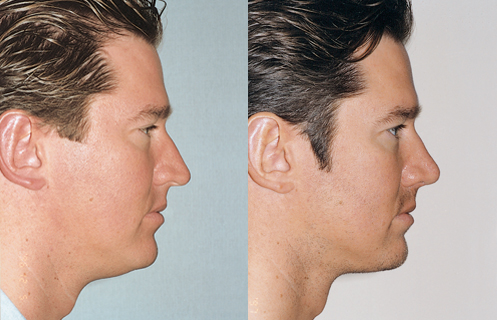Rhinoplasty Overview
by Admin
Posted on 06-12-2024 09:06 PM

What is Rhinoplasty?
Rhinoplasty is a type of surgery that changes the shape of your nose. People often seek this procedure for various reasons, such as improving their appearance or fixing breathing problems. It's important to understand that rhinoplasty can involve several different techniques, tailored to an individual's needs.
This surgery can be done for cosmetic reasons, like making the nose smaller or straighter. It can also be performed for medical reasons, such as correcting a deviated septum that causes breathing difficulties. Understanding the purpose of your surgery is crucial in setting realistic expectations!
Types of Rhinoplasty
There are two main types of rhinoplasty: open rhinoplasty and closed rhinoplasty. Each type has its own advantages and is chosen based on the specific needs of the patient.
In open rhinoplasty, the surgeon makes a small incision on the outside of the nose, allowing for more visibility and access. This method is often used for more complex surgeries. On the other hand, closed rhinoplasty involves incisions made inside the nose, which leaves no visible scars. Here’s a quick list of the differences:
- Open Rhinoplasty: Better visibility, potential for more extensive changes.
- Closed Rhinoplasty: Less visible scarring, quicker recovery time.
Reasons for Rhinoplasty
People choose rhinoplasty for various reasons. Some do it to enhance their facial symmetry, while others aim to correct birth defects or injuries. Understanding your motivation can help guide your decision-making process.
Here are some common reasons for getting rhinoplasty:
- Improving the size or shape of the nose.
- Fixing a crooked or uneven nose.
- Correcting breathing issues related to the nasal structure.
Consultation Process
The consultation is a crucial step before undergoing rhinoplasty. During this time, you will meet with a surgeon who specializes in this procedure. They will discuss your goals, medical history, and what to expect during the surgery.
It’s important to ask questions! Knowing the risks, recovery time, and potential outcomes can help you feel more prepared. Additionally, many surgeons use computer imaging to show potential results, which can be exciting and informative!
Recovery After Rhinoplasty
Recovery from rhinoplasty takes time and patience, but understanding the process can ease your mind. Typically, patients can expect swelling and bruising around the nose and eyes. This is completely normal and should begin to fade within a couple of weeks.
During the recovery period, you may need to avoid strenuous activities and follow your surgeon's specific recommendations. Here are some tips for a smoother recovery:
- Keep your head elevated to reduce swelling.
- Use cold compresses to soothe discomfort.
- Follow all post-operative instructions from your surgeon.
Potential Risks and Complications
As with any surgery, rhinoplasty carries certain risks. It's essential to discuss these with your surgeon beforehand. Some potential complications include infection, scarring, or dissatisfaction with the results.
Being aware of these risks helps you make an informed decision. Most people recover well and are pleased with their new nose, but it’s always good to know what to watch out for!
Final Thoughts on Rhinoplasty
Rhinoplasty is a significant decision, whether for cosmetic or medical reasons. It's vital to do your research and consult with a qualified surgeon. With the right information and professional guidance, you can achieve results that align with your desires.
Remember, the goal of rhinoplasty isn’t just about enhancing appearance—it's also about improving function and quality of life. So, if you’re considering this procedure, take your time and think it through!
Contact Us
If you have any questions or would like to schedule a consultation, don't hesitate to reach out to us at:
The Portland Center for Facial Plastic Surgery
1339 NW Couch St, Suite A
Portland, OR 97209
Phone: 503-899-0006
We look forward to helping you achieve your aesthetic and functional goals.
FAQs About Rhinoplasty
- What is rhinoplasty? Rhinoplasty is a type of surgery that changes the shape of your nose, often performed for cosmetic or medical reasons, such as improving appearance or fixing breathing problems.
- What are the types of rhinoplasty? There are two main types: open rhinoplasty, which involves external incisions for better visibility, and closed rhinoplasty, which uses internal incisions and leaves no visible scars.
- Why do people choose rhinoplasty? Common reasons include enhancing facial symmetry, correcting birth defects, fixing a crooked nose, and addressing breathing issues related to nasal structure.
- What should I expect during the consultation process? During the consultation, you'll discuss your goals, medical history, and what to expect during surgery. It's also a good time to ask questions about risks and recovery.
- What is the recovery process like after rhinoplasty? Recovery typically includes swelling and bruising, which should fade within a few weeks. Patients are advised to avoid strenuous activities and follow post-operative instructions.
- What are the potential risks and complications of rhinoplasty? Risks include infection, scarring, and dissatisfaction with results. It's important to discuss these with your surgeon before the procedure.
- What is the overall goal of rhinoplasty? The goal of rhinoplasty is to enhance appearance and improve nasal function, contributing to better quality of life.
